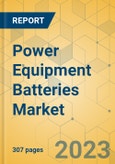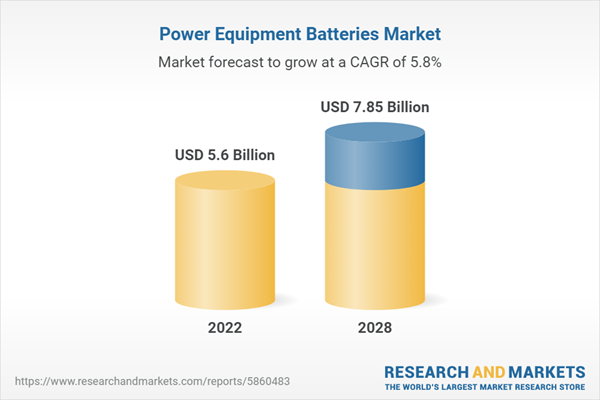Speak directly to the analyst to clarify any post sales queries you may have.
MARKET TRENDS & DRIVERS
Industry 4.0 & Smart Precision Manufacturing
Industrial automation architectures have witnessed the emergence of new industrial automation system architectures along with the application of several advanced technologies in recent years. Such initiatives were mainly intended to create efficient, responsive, and flexible manufacturing processes. These advances have supported the development of innovative and sophisticated cordless power tools and propelled the demand for power equipment batteries. Further, precision manufacturing is used in industries with an extremely low tolerance. For instance, defense equipment and machines, semiconductors and chips, and automobile and aerospace manufacturing industries require precise tolerance and generate a high demand for precision tools such as Electrical Discharge Machining (EDM), lathe machines, drilling machines, and milling machines. Thus, using such power tools in these industries will also stir the demand for power equipment batteries.Rise in the Number of Infrastructure Development Programs
The rise in residential building construction projects is expected to drive the demand for a comprehensive range of battery-powered tools, such as hammer drills, impact wrenches, and circular saws. Adopting modern, innovative, and green equipment & technologies and building materials for faster and quality construction of houses will require power tools. Consequently, the demand for power equipment batteries will increase due to the surge in construction projects in the coming years.SEGMENTATION INSIGHTS
INSIGHTS BY BATTERY TYPE
The lithium-ion battery type held the largest global power equipment batteries market share in 2022. According to International Energy Agency (IEA), the lithium-ion (Li-ion) battery demand is poised by about 65% to 550 GWh in 2022, from around 330 GWh in 2021, primarily as a result of growth in electric in automobile sales, outdoor power equipment works and others. Power equipment manufacturers are striving hard to increase the efficiency, power density, cost, flexibility, battery life, recharge time, and other properties of these batteries, as well as research applications and methodologies. The increasing use of electric mobility and battery-powered equipment has increased lithium-ion battery use, which is projected to surge even more rapidly.INSIGHTS BY EQUIPMENT TYPE
The type of equipment used is highly dependent on the power tool and the nature of the work. For instance, light tools like drills, drivers, and wrenches need personal and professional bits and batteries. Similarly, blades are crucial for wood and metalworking, frequently changed in tools like circular saws, reciprocating saws, band saws, and jigsaws. The growth of complexity and precision requirement in EV manufacturing, electrical and electronic circuits have fueled the growth of fasteners and fastening tools. Equipment types of the powered equipment batteries market can be categorized as a driller, chainsaw, lawn mower, impact wrench, and other equipment.Segmentation by Equipment Type
- Driller
- Chainsaw
- Lawn Mowers
- Impact Wrench
- Others
INSIGHTS BY END-USER TYPE
The industrial end-user segment of the global power equipment batteries market includes major contributors, such as the automotive and construction industries, which generated the highest revenue in 2022. The scenario is expected to remain consistent throughout the forecast period due to the demand for sophisticated tools from these industries and the increase in precision manufacturing processes. The considerable rise in renovation, retrofitting, and DIY projects is expected to drive the demand for power equipment batteries in the residential and commercial segments.Segmentation by End User
- Industrial
- Construction
- Automotive
- Aerospace
- Electronics
- Energy
- Shipbuilding
- Other Industries
- Commercial
- Residential
GEOGRAPHICAL ANALYSIS
North America dominated the global power equipment batteries market in 2022 and is expected to maintain its position during the forecast period, with the U.S. contributing to the highest revenue share as it is the largest economy in the region. Also, North America is home to several large industries, including automobile, construction, aerospace, electronics, and packaging. With advances in Li-ion battery technology, the North American cordless power tools industry is expected to witness high growth with a substantial surge in demand for equipment for battery-related tools.Segmentation by Geography
- North America
- The U.S.
- Canada
- Europe
- The U.K.
- Germany
- France
- Russia
- Italy
- Spain
- APAC
- China
- Japan
- South Korea
- India
- Australia
- Rest of APAC
- Latin America
- Brazil
- Mexico
- Argentina
- Middle East & Africa
- South Africa
- Saudi Arabia
- UAE
- Turkey
- Rest of the Middle East And Africa
COMPETITIVE LANDSCAPE
The global power equipment batteries market is characterized by low market concentration and high competition among players. The present scenario drives vendors to alter and refine their unique value propositions to achieve a strong market presence. Currently, the market is highly fragmented and dominated by vendors such as Stanley Black & Decker, Bosch, and TTI. Also, numerous domestic tool manufacturers produce equipment in various shapes and designs that replicate products from renowned vendors. These major vendors have a global presence in three major regions, namely North America, APAC, and Europe.Key Company Profiles
- Stanley Black & Decker
- Bosch
- Techtronic Industries Co. Ltd.
- Makita
- Hilti
- Husqvarna
Other Prominent Vendors
- Apex Tool Group
- Ariens Company (Ariensco)
- Atlas Copco
- Snap On
- Koki Holdings
- Einhell
- Echo
- Fortive
- Masport
- Positec
- CHERVON
- Fein
- FERM
- Aimco
- Festool
- CS Unitec
- Dynabrade
- Deere &Company
- STIHL
- Blount
- Kyocera
- INTERSKOL
- Panasonic
- Uryu Seisaku
- Ingersoll Rand
- Emerson
KEY QUESTIONS ANSWERED:
- How big is the power equipment batteries market?
- What is the growth rate of the global power equipment batteries market?
- What are the growing trends in the power equipment batteries market?
- Which region holds the most significant global power equipment batteries market share?
- Who are the key Players in the market?
Table of Contents
Companies Mentioned
- Stanley Black & Decker
- Bosch
- Techtronic Industries Co. Ltd.
- Makita
- Hilti
- Husqvarna
- Apex Tool Group
- Ariens Company (Ariensco)
- Atlas Copco
- Snap On
- Koki Holdings
- Einhell
- Echo
- Fortive
- Masport
- Positec
- CHERVON
- Fein
- FERM
- Aimco
- Festool
- CS Unitec
- Dynabrade
- Deere &Company
- STIHL
- Blount
- Kyocera
- INTERSKOL
- Panasonic
- Uryu Seisaku
- Ingersoll Rand
- Emerson
Methodology
Our research comprises a mix of primary and secondary research. The secondary research sources that are typically referred to include, but are not limited to, company websites, annual reports, financial reports, company pipeline charts, broker reports, investor presentations and SEC filings, journals and conferences, internal proprietary databases, news articles, press releases, and webcasts specific to the companies operating in any given market.
Primary research involves email interactions with the industry participants across major geographies. The participants who typically take part in such a process include, but are not limited to, CEOs, VPs, business development managers, market intelligence managers, and national sales managers. We primarily rely on internal research work and internal databases that we have populated over the years. We cross-verify our secondary research findings with the primary respondents participating in the study.

LOADING...
Table Information
| Report Attribute | Details |
|---|---|
| No. of Pages | 307 |
| Published | August 2023 |
| Forecast Period | 2022 - 2028 |
| Estimated Market Value ( USD | $ 5.6 Billion |
| Forecasted Market Value ( USD | $ 7.85 Billion |
| Compound Annual Growth Rate | 5.7% |
| Regions Covered | Global |
| No. of Companies Mentioned | 32 |









